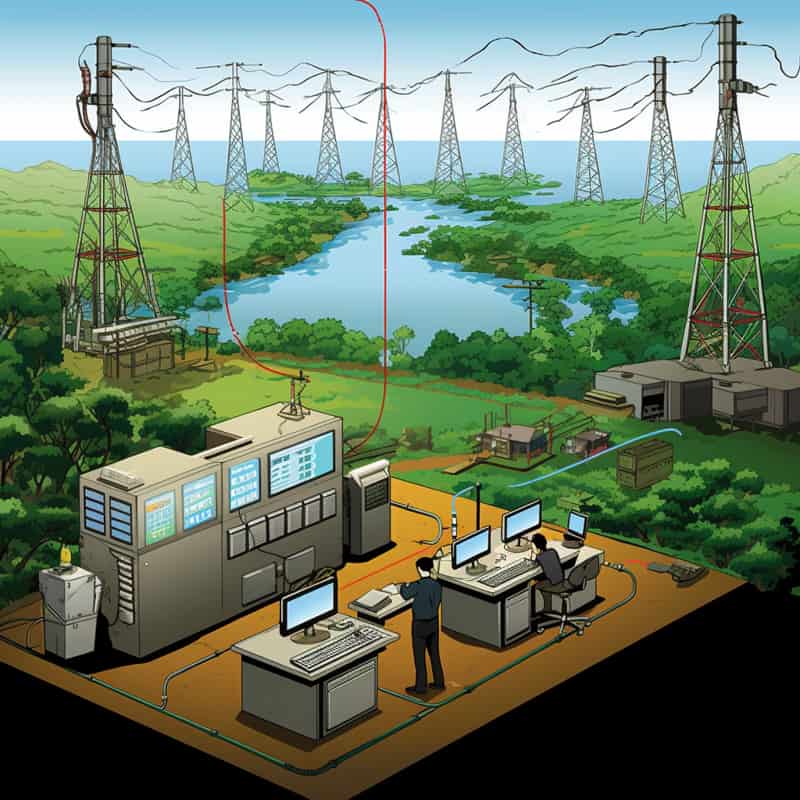SAP ISU Interview Questions
SAP Utilities (also called SAP ISU) is an innovative business software solution for optimising how water, electricity, natural gas and waste are managed and handled.
Job applicants in IT must know how to answer SAP ISU (Industry Solution Utilities) interview questions accurately to secure work in this challenging sector.
Questions in an SAP ISU interview aim at testing your knowledge of new technologies and their application in business situations such as ERP/MDM/Billing, thus revealing your technical abilities while showing whether/or how qualified candidates might be for work opportunities within IT or not!
A group of experienced experts may discover candidates technical abilities as they reveal whether/or qualify them to do their respective roles!
Interview questions on SAP ISU cover various subjects, spanning technical and functional components of ISU and ways to manage customer relations.
Learning this software tool is essential if you wish to work in the power industry; this guide covers some of the more frequently asked SAP ISU interview questions to prepare you for any interviews you might be attending.
Good luck as you prepare for an SAP ISU interview!

1. How are SAP ISU utilities divided into three parts in India?
In India, public, private, and commercial utilities are divided into three parts. Public utilities include electricity, gas, water, multimedia, wastewater waste management, telecommunication, and district heating.
2. What are some new additions to the utility sector in India?
New additions include cable television, internet data, and service uses like 5G.
3. What are some challenges faced by the energy segment in the utility sector in India?
The real issue in the energy segment is the difficulty in storing electricity, such as water, which can be unusable for extended periods due to high pressure and temperature conditions. Keeping natural gas for extended periods can increase prices in the natural gas segment.
4. How are the utility sectors in India classified?
The utility sectors in India are classified into three segments: generation, transmission, distribution, and retail.
5. How do the energy and natural gas segments differ regarding challenges and pricing strategies?
The energy segment is primarily driven by consumer demand to retailers, who send that demand to distribution units. Transmission lines are mostly owned by government or regulatory bodies, controlling the transmission process.
6. What are the two main types of markets in the utility management sector?
The two main types of markets in the utility management sector are regulated and deregulated. Deregulated markets offer benefits such as increased value-added labels, reduced losses, and easier private privatisation, mergers, and acquisitions.
7. What are the three main segments in the utility management sector?
The three main segments in the utility management sector are generation, transmission, and distribution.

SAP ISU Training

The ISU primarily deals with distribution companies, customer services, and billing by invoicing customers.
9. What are the core models used in the ISU solution?
The core models used in the ISU solution include finance, related models, PMS, and CCS.
10. What solutions does ASAP Medicare for Health and Care offer with multiple models, including core models available with SAP?
ASAP Medicare for Health and Care offers various solutions with multiple models, including core models available with SAP. Core models include management, meter and device management, market, sales, installation services, consumption entering, billing and services, consumption billing, invoicing, contract accounts receivable and payable (FICA), and customer services.
11. What is the moving process in the utility management sector?
The moving process in the utility management sector involves a POD or address request from the owner or tenant of the premise. Once the request is received, a business partner and a contract are created. The meter reading is installed during the moving process, and the details are validated. The business partner can request a budget billing plan if the security is okay. The business partner only acts on the project if the request is there.
12. What are the two main types of markets in the utility management sector?
The two main types of markets in the utility management sector are regulated and deregulated. Deregulated markets offer benefits such as increased value-added labels, reduced losses, and easier private privatisation, mergers, and acquisitions.
13. What is the roadmap started with?
The roadmap started with ERP, a concept for physical objects. ERP focuses on resource planning and managing resources efficiently to run an enterprise without interruption.
14. What is the company’s regional structure?
The company’s regional structure is developed by organisations such as Maruti, which has the most extensive reach across India. Districts are divided based on their organisational offices to ensure uninterrupted service provision.
15. How is the regional structure divided?
The regional structure is divided into similar components: city, city district, street, and postal connection. This helps in understanding the location of the grid, road, and connection object.
16. What is the utility sector?
The utility sector, which includes electricity and gas, uses a volume correction factor to adjust gas meters based on temperature and air pressure. The gas meter can run more efficiently in different locations by obtaining temperature and air pressure details from the meteorological department linked to the postal regional structure.

SAP ISU Online Training

17. What is water hardness?
Water hardness is a complex issue for utilities, with various minerals such as iron, calcium, and manganese contributing to its hardness.
The ionic content of water also affects its hardness, with variations in hardness varying by 5 kilometres.
Water metering calculates water hardness based on volume and requires water hardness details from the water and utility departments.
18. How are chemicals applied to neutralise minerals in water?
Chemicals are applied to neutralise the minerals based on the water’s hardness, making the water healthier. This process is directly linked to the postal regional structure.
19. What is calorific value?
Calorific value is another important factor in water quality. In hilly areas, oxygen levels decrease, causing the calorific value to fall. This affects the rate of gas billing, as different regions have different rates for gas.
The postal regional structure links calorific value districts through the postal regional form.
20. What are the three types of regional structures?
The regional structure comprises three types: global, political, and company. Countries define global settings and are automatically provided by SAP. Regions and time zones are also globally defined.
Each country has its time zone, such as the Chennai-Kolkata time zone in India. These settings can be customised if needed. Temperature,
21. What is the installation process for a billing-relevant installation?
The installation process for a billing-relevant installation involves two steps: the device is directly linked to the structure, and the device is directly related to the location.
Technical facilities are linked to the device location, while billing-relevant buildings are connected to the utility installation. The user is then asked to remove devices and create a meter reading order for the device.
22. What is a meter reading unit (MRU)?
A meter reading unit (MRU) is a unit that can be created within a single team based on the regional structure. An MRU is the number of customers or installations that can be built simultaneously.
A portion is the number of customers that can be made in one go, with a part being the number of customers that can be built in one shot.
23. What is the responsibility of the MRU?
The MRU is responsible for creating the MRO meter reading order, which allows the meter reading to be taken. Scheduling is used to block a period for meter readings.
24. What is scheduling used for in the MRU process?
Scheduling is used to block a period for meter readings. The scheduling process involves creating a parameter record and a portion to form the MRU.

The SAP ISU interview questions I faced were challenging yet varied in scope and difficulty, covering such aspects as understanding its components and methods and testing my abilities to demonstrate they had what was necessary for doing the job successfully.
Successful candidates should have no trouble doing well when answering these interview questions about SAP ISU, good preparation should help candidates perform as anticipated on this test.
SAP ISU interview questions offer an exciting and engaging way of finding out whether someone is suitable for a particular role – this increases the odds that only the ideal individual will be selected as a hiring candidate.

SAP ISU Course Price


Prasanna
Author